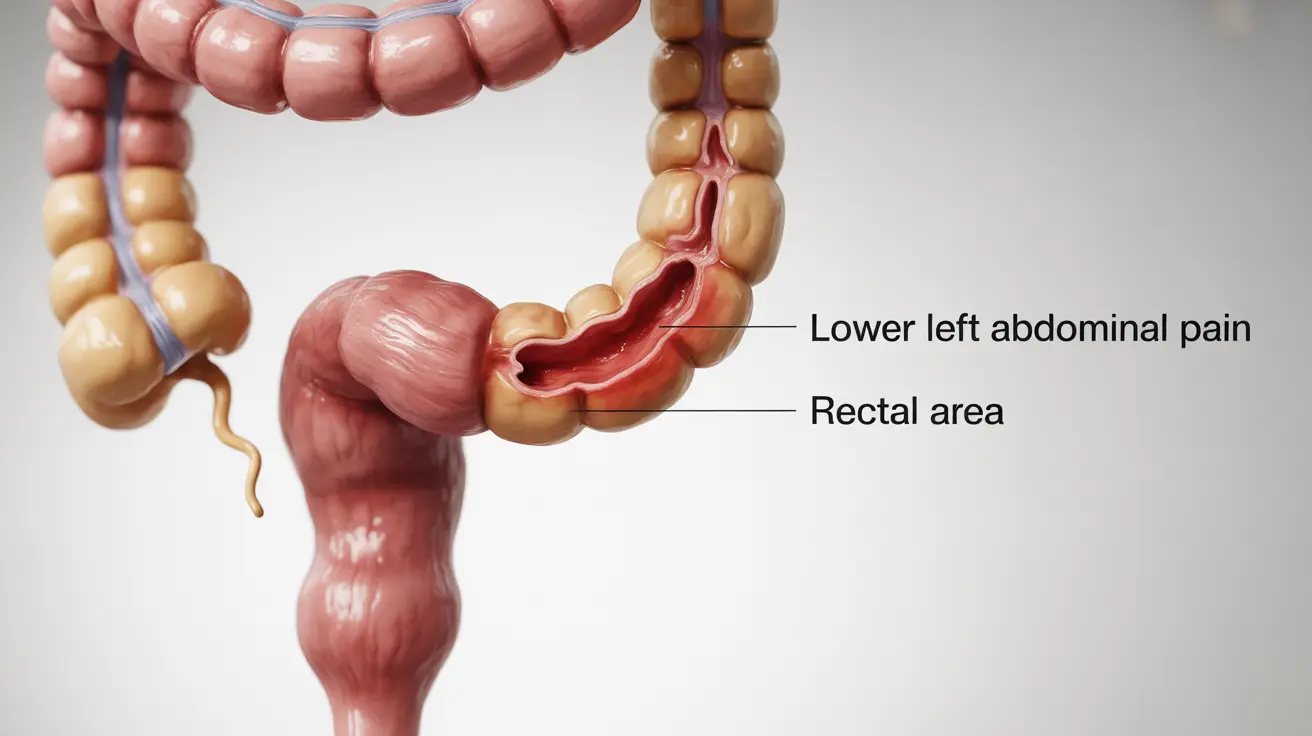Living with ulcerative colitis (UC) can be challenging, especially when dealing with abdominal pain. Understanding where this pain typically occurs and what it means can help you better manage your condition and know when to seek medical attention. This comprehensive guide explores the various aspects of ulcerative colitis pain location and its implications for your health.
Understanding Ulcerative Colitis Pain Patterns
Ulcerative colitis pain typically follows specific patterns based on the inflammation's location in your colon. The pain can vary in intensity and location depending on which part of your large intestine is affected and the severity of your condition.
Lower Left Abdominal Pain
The most common location for ulcerative colitis pain is in the lower left side of your abdomen. This area corresponds to where your sigmoid colon and rectum are located, which are often the primary sites of inflammation in UC. The pain may feel like a constant ache or cramping sensation that can intensify during flare-ups.
Other Common Pain Locations
- Lower central abdomen
- Around the belly button
- Throughout the entire colon (in cases of extensive colitis)
- Rectal area (especially during bowel movements)
Types of Ulcerative Colitis and Pain Characteristics
The location and severity of pain often correlate with the type of ulcerative colitis you have:
- Ulcerative proctitis: Pain focused in the rectum
- Proctosigmoiditis: Pain in the lower left side and rectum
- Left-sided colitis: Pain along the left side of the abdomen
- Extensive colitis: Pain throughout the abdomen
- Pancolitis: Widespread abdominal pain affecting the entire colon
Associated Symptoms and Warning Signs
Ulcerative colitis pain rarely occurs in isolation. Common accompanying symptoms include:
- Bloody diarrhea
- Urgent bowel movements
- Fatigue
- Weight loss
- Reduced appetite
- Nausea
- Joint pain
When to Seek Medical Attention
Certain pain characteristics warrant immediate medical attention:
- Severe, persistent abdominal pain
- Pain accompanied by high fever
- Inability to keep food down
- Signs of dehydration
- Severe rectal bleeding
- Significant weight loss
Frequently Asked Questions
Where is ulcerative colitis pain typically located in the abdomen?
Ulcerative colitis pain is most commonly experienced in the lower left side of the abdomen, corresponding to the sigmoid colon and rectum. However, the pain location can vary depending on the extent of inflammation in your colon.
What does ulcerative colitis pain feel like and how does it change during flare-ups?
The pain can range from mild discomfort to severe cramping. During flare-ups, it often becomes more intense and may be accompanied by sharp or burning sensations. The pain typically worsens before bowel movements and may temporarily improve afterward.
How does the type of ulcerative colitis affect the location and intensity of pain?
Different types of UC affect different portions of the colon, directly influencing pain location. Proctitis causes rectal pain, while pancolitis can cause pain throughout the entire abdomen. The more extensive the inflammation, the more widespread the pain typically becomes.
What are the common symptoms that accompany ulcerative colitis pain?
Common accompanying symptoms include bloody diarrhea, urgent bowel movements, fatigue, weight loss, reduced appetite, and occasional nausea. Some patients also experience joint pain and other extraintestinal symptoms.
When should I seek medical help for ulcerative colitis pain?
Seek immediate medical attention if you experience severe, persistent abdominal pain, high fever, inability to keep food down, signs of dehydration, severe rectal bleeding, or significant weight loss. These symptoms may indicate a serious complication requiring prompt treatment.




